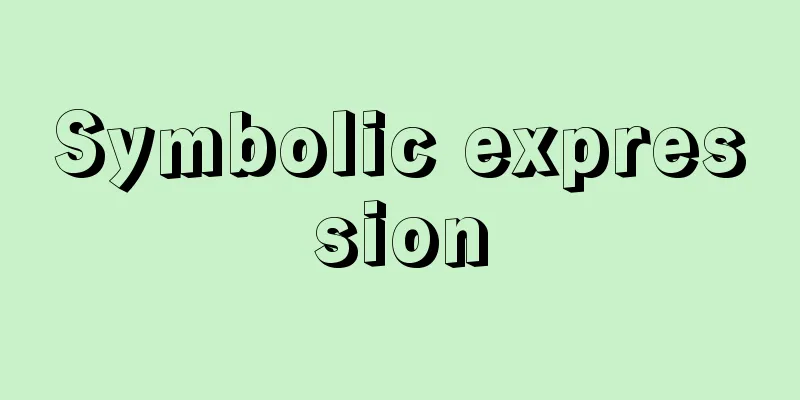Random - Shindai

|
〘noun〙 (Perhaps a variation of "shintai" (progress and retreat). Also written as "mi-tai" or "mi-bukuro") 1. All the property owned by an individual or a family. All of the land, house, treasure, and other assets owned by that person. All property. Personal status . *Ukiyo-zoshi, Nihon Eitaigura (1688), 2 "When one possesses gold and silver, they are like tiles and stones. There is no possession more valuable than a personal bag (shindai) ." 2. The state of possessing property. The financial condition of an individual or family. Livelihood. Living arrangement. Personal status. *Toraakirahon Kyogen, Kaminari (late Muromachi period - early early modern period) "A person of good character like us will not be allowed to take anything from the people of Shindai." 3. The position of possessing property, salary, etc. Status. Position. Circumstances. Personal status. ※Kanazoshi, Mi no Kagami (Mirror of the Body ) (1659), Vol. 2: “The poor and lowly consider beauty and the future of their bodies. This is what is called knowing one’s place in life.” [Essay] (1) Currently, the term “shindai” is generally used, but this term has not necessarily become established in the distant future; in the early modern period, other terms such as “mi fukuro” and “tai” could also be seen. (2) The original pronunciation of the character "shintai" which is said to be the origin of the word was "shintai", but in the Middle Ages it changed to "shindai" due to rendaku. The meaning of the character also derives from the original meaning of advancing and retreating, as well as posture, behavior, and the way one conducts oneself, to the meaning of treating land and people as one wishes, and from there it also came to express the meaning of property. As for the writing, it seems that "mi-bukuro" (body bag), "tai" (body), and "mi-dai" (living cost) which are reminiscent of property belonging to oneself based on the literal meaning, came to be used. (3) In the "Wa-Ei Rin-Shusei (First Edition)" and other dictionaries from the Meiji period, many of them use the character "shindai" in the heading, which continues to this day. RansomwareSource: The Selected Edition of the Japanese Language Dictionary About the Selected Edition of the Japanese Language Dictionary Information |
|
〘名〙 (「進退」の転じたものか。「身躰」「身袋」などとも書く)① 個人、または一家が有する、すべての財産。その身が持つ土地・家屋・財宝その他の資産全部。全財産。身上(しんしょう)。※浮世草子・日本永代蔵(1688)二「金銀も有所には、瓦石のごとし。身袋(シンダイ)程高下の有物はなし」② 財産を有している状態。個人または一家の財政状態。生計。暮らしむき。身上。※虎明本狂言・神鳴(室町末‐近世初)「われらが様なるやぶぐすしには、しんだいのよひものはみゃくをとらせもいたさぬ」③ 財産・俸祿などを所有する立場。身分。地位。境遇。身上。※仮名草子・身の鏡(1659)下「貧賤はまた美麗をのぞき、身躰(シンダイ)の以来つづくべき思案をする。是を身の程を知たると云べし」[語誌](1)現在、一般に「身代」の表記が用いられているが、この表記の定着は必ずしも古いものではなく、近世には「身袋」「身体」などの表記も見られる。 (2)語源とされている「進退」の字音は本来シンタイであるが、中世には連濁によって「シンダイ」と転じる。意味も、本来の進むことと退くこと、また立ち居振舞、自分の身の処し方などから、自分の思うままに土地や人間を扱うの意が派生し、そこから財産の意をも表わすようになる。表記としては、字義から身に属する財産を連想させる「身袋」「身体」「身代」などが使用されるようになったものか。 (3)「和英語林集成(初版)」以下明治時代の辞書類では、見出しに「身代」の字を当てるものが多く、これが現在に続いている。 み‐の‐しろ【身代】出典 精選版 日本国語大辞典精選版 日本国語大辞典について 情報 |
Recommend
First-order benchmark - Ittosuijyunten
...Therefore, the elevation of a point is defined...
Public affairs field - Kujibata
… Public duties as taxes were originally imposed ...
Municipal system - Shichosonsei
A system that stipulates the organization, author...
wayang kritik (English spelling)
…Today, only one dalang remains in East Java, and...
Oonaohiuta - Oonaohiuta
...The instruments used are a flute, a hichiriki,...
Hyophorbe verschaffeltii (English spelling) Hyophorbeverschaffeltii
… [Takabayashi Masatoshi]. … *Some of the termino...
Mitsue [village] - Mitsue
A village in Uda County, on the eastern edge of Na...
Eusebios (of Nicomedia)
Bishop of Nicomedia around ?-341 (?-339). A centra...
Naval Air Force - Kaigunkoukuubutai
…(3) Electronic warfare, air rescue, etc. [Army/N...
Lachenalia mutabilis (English spelling) Lachenalia mutabilis
…[Tora Saburo Kawabata]. … *Some of the terminolo...
Vajrapani Sutra - Kongouchogyo
A Buddhist scripture. Along with the Mahavairocan...
Artificial insemination
This is a technique in which male sperm is collec...
Mynah bird - Mynah bird
A bird of the Starling family. Wingspan: 16cm. Its...
Red-eared slider - Red-eared slider
A turtle of the Eridan family. There are 12 subspe...
Yi-li-bu; I-li-pu
[Born] Qianlong 37 (1772) Died in 1843. Guangzhou....









